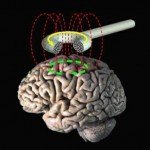Music and Neurosciences V – Blog 4 (Coordinating movement with music)
Hello Dear Reader
 I will admit that I was flagging a little by the final session of Day 2 of Music and Neurosciences. The diagnosis was a clear case of “Conference brain” – a unique condition where the brain appears to actually feel full and resists further information – seems to set in earlier and earlier these days!
I will admit that I was flagging a little by the final session of Day 2 of Music and Neurosciences. The diagnosis was a clear case of “Conference brain” – a unique condition where the brain appears to actually feel full and resists further information – seems to set in earlier and earlier these days!
Nevertheless I sat down to enjoy a session on individual differences in movement coordination, arranged by Peter Keller and Shinichi Furuya.
 Their session focused on the incredible act of body synchronization that we see in musical performance, including the highly precise control of movement timing. The session speakers focused on issues surrounding individual differences in the temporal coordination of movements in musical contexts.
Their session focused on the incredible act of body synchronization that we see in musical performance, including the highly precise control of movement timing. The session speakers focused on issues surrounding individual differences in the temporal coordination of movements in musical contexts.
Peter gave the first presentation which was all about timing prediction in ensemble performance. It is a little tricky to get a musical ensemble (even a little one) into a brain scanner, and Peter is interested in the neurological underpinnings of temporal prediction. He also wants to try to capture these behaviours ‘on the fly’, to get as realistic a picture as possible of what the brain is doing when we play/sing with other musicians.
In one study Peter had musicians in a scanner synchronizing with recordings that contained abrupt tempo changes. In a second study, a bit less realistic but focused on more fine-grained timing, he used EEG to look at the minute electrical changes in the brain that accompany attempts to synchronize with finger tapping.
In a third and final study Peter looked at the same tapping task in patients with brain lesions. All the data lead to the conclusion that complex prediction of timing is a cortical brain funtion, a higher brain function rather than one lead by lower (older, subcortical) systems.
 The next talk was by Michael Hove who is interested in impaired movement in Parkinson’s and ADHD, and possible remediation strategies that relate to music. For Parkinson’s patients he showed evidence related to my previous blog and the work of Simone Dalla Bella, on Rhythmical Auditory Stimulation (RAS). Fixed temp RAS can improve walking in Parkinson’s patients but Michael showed that interactive metronomes – ones that synchronize to the patient’s walking – have even better results.
The next talk was by Michael Hove who is interested in impaired movement in Parkinson’s and ADHD, and possible remediation strategies that relate to music. For Parkinson’s patients he showed evidence related to my previous blog and the work of Simone Dalla Bella, on Rhythmical Auditory Stimulation (RAS). Fixed temp RAS can improve walking in Parkinson’s patients but Michael showed that interactive metronomes – ones that synchronize to the patient’s walking – have even better results.
I love the idea that Simone talked about groove based music and how the beat in this kind of music could be an even more effective type of RAS. Makes sense to me. I can’t resist walking to the rhythm of a good groove!
The ADHD research work is still in early days but it early theories suggest that a similar kind of sensori-motor timing intervention has the potential to address reported timing difficulties in this population.
 Our third speaker was Shinichi Furuya whose topic was one of great interest to musicians, focal dystonia. I have never really practiced enough to be in any danger of acquiring this condition but for those who do it can be quite distressing and debilitating for their performance skills. In FD a person experiences involuntary movements that might look small to the untrained eye but which can have a big effects on how a person plays, how they feel about their sound, and consequently their self confidence as a performer.
Our third speaker was Shinichi Furuya whose topic was one of great interest to musicians, focal dystonia. I have never really practiced enough to be in any danger of acquiring this condition but for those who do it can be quite distressing and debilitating for their performance skills. In FD a person experiences involuntary movements that might look small to the untrained eye but which can have a big effects on how a person plays, how they feel about their sound, and consequently their self confidence as a performer.
Fine dexterous control can be severely impaired in FD but Shinichi has been studying exactly how finger patterns in particular can be impacted by the condition and working on therapeutic approaches to address the core difficulties.
 The therapeutic approach uses tDCS, a brain stimulation technique that requires the placement of coils above the scalp, through which is passed a small electrical current.
The therapeutic approach uses tDCS, a brain stimulation technique that requires the placement of coils above the scalp, through which is passed a small electrical current.
The motor areas of the brain are close to the top of the head which makes tDCS a possible form of treatment.
Shinichi showed data that tDCS application was associated with beneficial effects on motor control, especially for those with the most severe FD symptoms. This promising work suggests that the re-acquisition of skilled motor coordination is possible but as yet the underlying reasons for the effect remain speculative.
The final presentation came from Fredrik Ullen who has worked on precise timing in music performance, like Peter, but has been using a unique paradigm called ‘isochronous serial interval production’ or ISIP.
I SIP amounts to the tracking of hand and finger movements to regular beats. Interestingly it apears that ISIP variability is negatively related to IQ (using a twin study design) – more intelligent people (by IQ scores) are more consistent with their movements. Fredrik related this to short-term memory, though I would like to see this tested more exactly.
SIP amounts to the tracking of hand and finger movements to regular beats. Interestingly it apears that ISIP variability is negatively related to IQ (using a twin study design) – more intelligent people (by IQ scores) are more consistent with their movements. Fredrik related this to short-term memory, though I would like to see this tested more exactly.
That was the end of Day 2.
I had a wander with friends into a little coffee place to chat about the day and release some tensions over a warm beverage. Not tensions really – more like brain tensions, otherwise known as ideas! You can get quite a lot of crazy ideas when you are surrounded by lots of clever people doing fascinating experiments. I find it helps to chat them through before heading to bed. Otherwise I don’t sleep! And I needed my sleep as Day 3 of this conference was going to be a long one…

One Comment
Pingback: